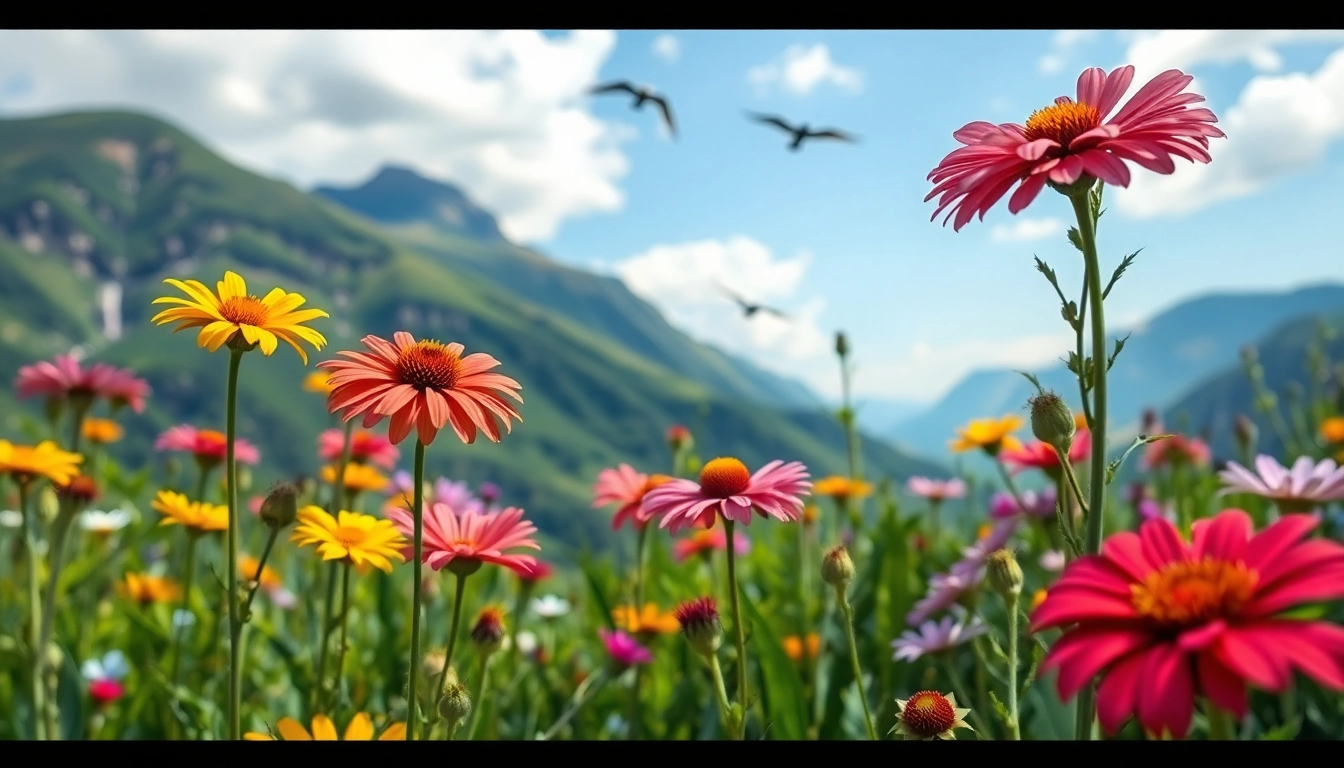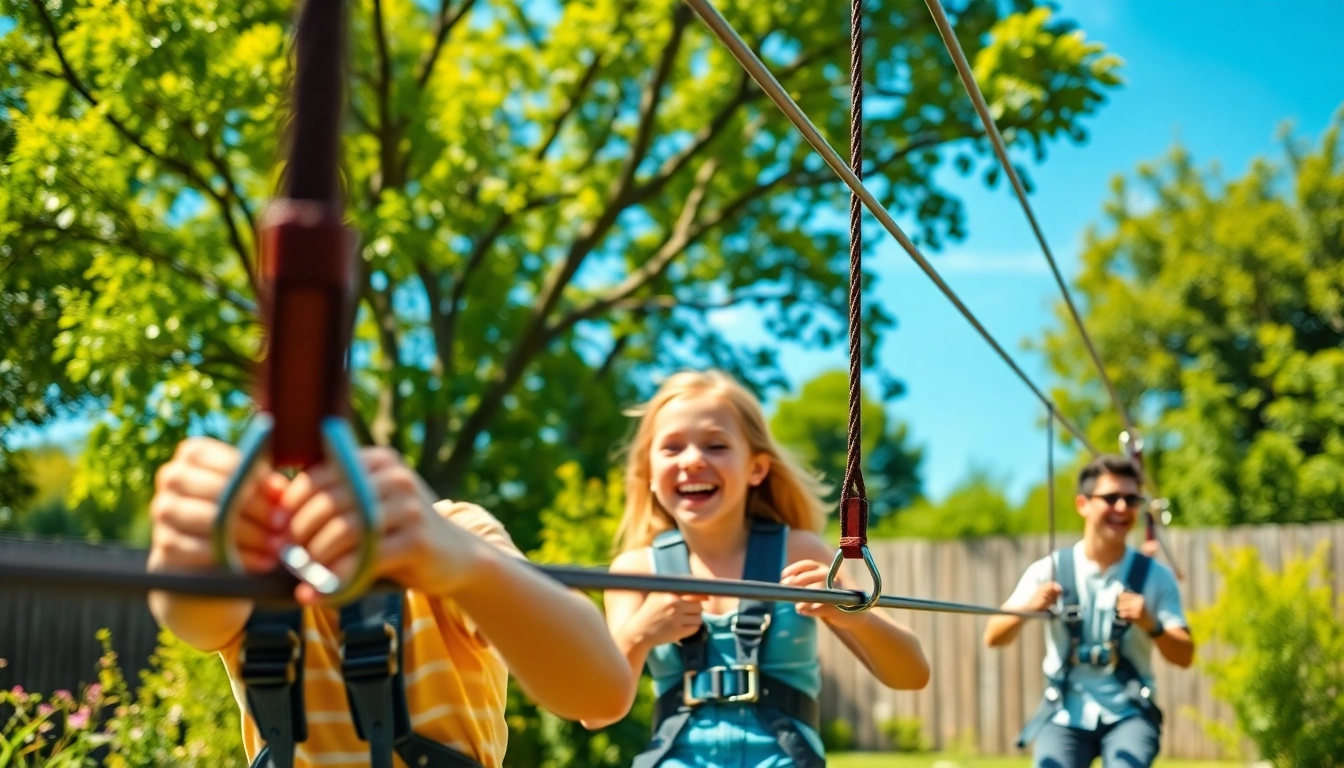Understanding Wildflower Ecosystems
Wildflowers are not just beautiful; they are integral components of natural ecosystems that contribute to biodiversity, soil health, and the well-being of local wildlife. Understanding the complexities of wildflower ecosystems is crucial for anyone interested in gardening, environmental conservation, or simply appreciating nature. By cultivating wildflowers, individuals can play a vital role in supporting these ecosystems and enhancing their surroundings. For a deeper dive into this subject, you can explore further at www.sudswild.com.
Benefits of Wildflowers for Biodiversity
Wildflowers offer numerous ecological benefits that make them essential for maintaining biodiversity. They support various life forms, from pollinators like bees and butterflies to herbivores and predatory animals. By providing food, shelter, and breeding grounds, wildflower species help maintain the balance of ecosystems. Furthermore, the genetic diversity inherent in wildflower populations is crucial for resilience against diseases, pests, and environmental changes.
- Supporting Pollinators: Many wildflowers produce nectar and pollen, which are crucial food sources for pollinators. This relationship is vital for plant reproduction, emphasizing the interdependence of species.
- Soil Erosion Control: Wildflowers, with their extensive root systems, help anchor soil, reducing erosion and improving soil health.
- Enhancing Habitat: Wildflowers create varied habitats that support a wide range of plant and animal species, promoting overall ecological health.
Common Wildflower Species and Their Characteristics
There are many beautiful wildflower species that vary in appearance, habitat preferences, and ecological roles:
- Black-eyed Susan (Rudbeckia hirta): Characterized by its bright yellow petals and dark center, this perennial flower attracts numerous pollinators and thrives in well-drained soils.
- Butterfly Milkweed (Asclepias tuberosa): This drought-tolerant plant produces striking orange flowers that are crucial for monarch butterfly larvae.
- Wild Bergamot (Monarda fistulosa): Known for its aromatic leaves and purple blossoms, it supports various bee and butterfly species.
How Wildflowers Impact Local Wildlife
Wildflowers positively influence local wildlife in several ways:
- Food Sources: Wildflowers provide essential nutrients in the form of nectar, pollen, and seeds, which are vital for many species.
- Habitat Creation: The presence of wildflowers promotes a diverse range of habitats, including grasslands, meadows, and wetlands, which support numerous animal species.
- Predator-Prey Interactions: Wildflower patches help maintain the balance of predator-prey relationships, fostering a healthy ecosystem.
Cultivating Wildflowers: A Step-by-Step Guide
Cultivating wildflowers can be a fulfilling activity that supports local ecosystems and enhances the beauty of your garden. Here’s a step-by-step guide to help you get started.
Selecting the Right Plants for Your Garden
The first step in cultivating wildflowers is selecting the appropriate species for your garden. Consider the following factors:
- Native Species: Native wildflowers are better adapted to local conditions and provide the best support for native wildlife.
- Soil Type: Assess your soil’s pH, drainage, and nutrient levels to select species that thrive in your garden’s specific conditions.
- Sunlight Exposure: Based on whether your garden receives full sun, partial shade, or full shade, choose wildflower varieties that flourish in those light conditions.
Soil Preparation and Maintenance Tips
Healthy soil is the foundation for growing vibrant wildflowers. Here are some soil preparation and maintenance tips:
- Tilling: Loosen the soil to enable good root growth and improve aeration.
- Amending Soil: Add organic compost to enhance nutrient content and improve soil structure.
- Weed Control: Keep the area free of invasive weeds, which can compete with wildflowers for nutrients and space.
Watering and Nutrients: Best Practices for Growth
Watering and fertilization are essential for establishing and maintaining wildflower gardens:
- Watering: Newly planted wildflowers require consistent moisture until established. Gradually reduce watering as plants mature.
- Nutrients: Avoid over-fertilization; wildflowers typically thrive in nutrient-poor soils. A light application of organic fertilizer during the growing season can suffice.
Creating Wildflower Habitats for Pollinators
Creating welcoming habitats for pollinators is one of the most rewarding aspects of wildflower gardening. Pollinators need safe spaces to thrive, and wildflowers play a crucial role in this habitat.
Understanding Pollinator Needs and Preferences
Different pollinators have specific needs and preferences:
- Nectar Sources: Ensure a variety of wildflower species that bloom at different times to provide ongoing food sources throughout the growing season.
- Safe Nesting Sites: Incorporate grass and ground covers to offer places for pollinators like bees to nest safely.
- Water Sources: Provide shallow water sources where pollinators can hydrate without drowning.
Designing a Pollinator-Friendly Space
A well-designed garden not only looks beautiful but serves as an ecological sanctuary:
- Mosaic Planting: Group wildflowers in clusters rather than in rows to facilitate easier foraging for pollinators.
- Layering Plants: Mix heights and colors to create a visually appealing space that attracts various species.
- Reduce Pesticides: Limit or eliminate pesticide usage to protect pollinators from harmful chemicals.
Monitoring and Supporting Pollinator Populations
Monitoring the health of pollinator populations in your area can help you make informed decisions to support them:
- Observation: Regularly observe the behavior and diversity of pollinators in your garden.
- Community Engagement: Join local conservation groups or networks focused on pollinator health to share insights and collective monitoring efforts.
- Use Technology: Utilize mobile apps or online platforms to record and report sightings, contributing to citizen science initiatives.
Wildflower Conservation Efforts
The conservation of wildflowers is crucial, especially in the face of urbanization and climate change. Conserving native wildflower populations ensures that ecosystems remain functional and resilient.
Importance of Conserving Native Wildflowers
Conserving native wildflowers is essential for several reasons:
- Ecological Balance: Native wildflowers support a wide array of local fauna, creating a balanced ecosystem.
- Cultural Significance: Many native wildflower species have cultural or historical importance to local communities, linking people to their heritage.
- Resilience to Climate Change: Native species are better adapted to local conditions and more resilient to climate fluctuations.
Case Studies of Successful Conservation Projects
Several conservation projects have achieved remarkable results in preserving native wildflower populations:
- Prairie Restoration Projects: Initiatives aimed at restoring native prairie ecosystems have successfully reintroduced wildflower species, benefiting biodiversity and local wildlife.
- Community Gardens: Several community-led initiatives have transformed urban spaces into thriving wildflower habitats, fostering community engagement and awareness.
How You Can Contribute to Wildflower Conservation
Individuals can play a crucial role in wildflower conservation through various actions:
- Plant Native Wildflowers: Start your own native wildflower garden to provide resources for local wildlife.
- Educate Others: Share knowledge about the importance of wildflower conservation within your community.
- Participate in Local Conservation Efforts: Engage with local organizations focused on habitat restoration and conservation.
Photographing Wildflowers: Tips and Techniques
Wildflowers offer incredible aesthetic value, and photography is a wonderful way to capture their beauty. Here are some tips and techniques for photographing wildflowers effectively.
Essential Gear for Capturing Wildflower Splendor
A few key pieces of equipment can enhance your wildflower photography experience:
- Camera: A DSLR or mirrorless camera allows for greater control over settings and image quality.
- Lens: A macro lens can capture intricate details of flowers, while a wide-angle lens can encompass broader landscapes.
- Tripod: A tripod stabilizes your camera for sharper images, especially in low light conditions.
Timing and Lighting for the Best Photos
Natural lighting is critical when it comes to photography:
- Golden Hours: Early mornings and late afternoons provide soft, diffused light that can enhance the vibrancy of wildflowers.
- Weather Conditions: Overcast days can reduce harsh shadows and create even lighting conditions that reveal details in petals and textures.
Editing and Sharing Your Wildflower Images
Editing can elevate your wildflower photos, bringing out their true beauty:
- Image Editing Software: Use tools like Lightroom or Photoshop to adjust light, contrast, and color balance.
- Photo Sharing: Utilize social media platforms and photography forums to share your images andconnect with fellow enthusiasts.
- Print and Display: Consider printing your best shots to create a photo album or showcase them in a gallery.






Leave a Reply